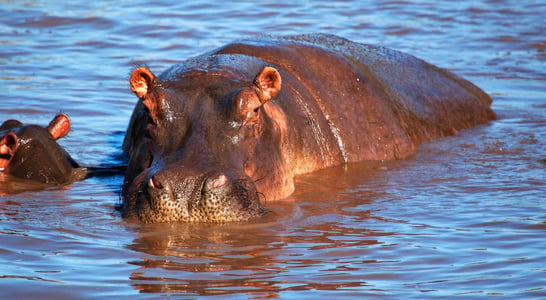
National Flag of Canada Day
National Flag of Canada Day is a celebration of the iconic red and white maple leaf flag that symbolizes Canada. The day serves as a reminder of the unity and pride Canadians feel towards their national emblem.
Canadians celebrate the National Flag of Canada Day to acknowledge the common values that bind them.
The day is a chance to express national pride and appreciate the freedoms they enjoy. It’s also a time to recognize the flag as a symbol of hope and peace.
How to Celebrate the National Flag of Canada Day
Host a Flag Party
Invite friends and family for a lively flag-themed bash. Decorate your home with red and white streamers. Encourage guests to wear colors matching the Canadian flag.
Serve snacks shaped like maple leaves and enjoy Canadian music. Everyone loves a good-themed party, right?
Create Flag Art
Get those creative juices flowing! Grab some paints, markers, or colored paper and create flag-inspired masterpieces.
Make a giant group mural, or design individual flags to display at home. Artistic fun for all ages and a great way to showcase your creativity.
Flag Raising Ceremony
Plan a mini flag-raising ceremony in your backyard or at a local park. Gather around, sing “O Canada,” and raise the flag proudly. It’s a beautiful, simple way to honor the symbol of national unity and pride.
Learn Flag Facts
Become a flag expert for the day. Discover fun and interesting facts about the Canadian flag. Share these nuggets of knowledge with friends or family, turning the day into an educational adventure. You can impress everyone with your newfound expertise!
Dress the Part
Embrace the spirit by donning red and white outfits. Go all out with maple leaf accessories, face paint, and temporary tattoos.
Strut around town, showing off your patriotic fashion sense. It’s a fun and easy way to celebrate and spread cheer.
Flag Baking Fun
Get into the kitchen and bake some flag-themed treats. Think red and white cookies, cupcakes with maple leaf decorations, or even a flag cake. Not only is it delicious, but it also adds a sweet touch to your celebrations. Baking never tasted so patriotic!
Flag Photo Challenge
Organize a photo challenge with friends and family. Capture creative and fun photos featuring the Canadian flag.
Share these snaps on social media, using a special hashtag to see everyone’s patriotic spirit. It’s a playful way to engage with the community.
Volunteer Together
Spend the day giving back to the community. Volunteer for a local charity or participate in a clean-up event.
Wear your red and white proudly while making a positive impact. Celebrating the flag by helping others brings a deeper sense of pride and joy.
History of National Flag of Canada Day
National Flag of Canada Day began on February 15, 1996. Prime Minister Jean Chrétien established it to commemorate the first time the red and white maple leaf flag was raised in 1965.
This day marks a moment of national pride and unity for Canadians, symbolizing their shared values and history.
Prime Minister Lester B. Pearson played a significant role in introducing the new flag. He led the initiative to create a unique and recognizable national symbol.
After much debate, the design featuring the maple leaf was chosen. Queen Elizabeth II officially proclaimed the new flag on January 28, 1965, and it was first hoisted on Parliament Hill on February 15 that year.
The flag represents core values such as democracy, inclusion, and equity, making it a significant symbol for all citizens. This day encourages everyone to reflect on the importance of these values in their daily lives.
This special day honors the flag’s introduction, which took place when it was first raised in Ottawa. The maple leaf flag has since become a powerful symbol of Canadian identity, both domestically and internationally.
It stands for the achievements and history shared by Canadians. The flag also represents the country’s diverse and inclusive nature, highlighting the importance of equality and respect among its people.
National Flag of Canada Day FAQs
Why does the Canadian flag’s maple leaf have 11 points?
The stylized maple leaf on Canada’s flag features 11 points for a balanced and symmetrical appearance.
This design ensures the leaf looks distinct and recognizable from a distance. The number of points doesn’t represent provinces or territories.
How did the “Great Flag Debate” influence Canada’s national identity?
In 1964, Canada engaged in the “Great Flag Debate” to choose a new national flag.
The debate was intense, reflecting the nation’s desire for a unique identity separate from British colonial symbols.
The adoption of the maple leaf flag in 1965 marked a significant step in defining Canada’s independent identity.
What was the role of the Royal Military College in the flag’s design?
Dr. George F.G. Stanley, a professor at the Royal Military College, proposed the flag’s red-white-red design.
He drew inspiration from the college’s own flag, which featured similar colors and a central emblem. This design became the basis for Canada’s national flag.
Are there any myths about the Canadian flag’s design?
A common myth suggests the flag’s 11 points represent Canada’s provinces and territories.
In reality, the points were chosen for aesthetic balance and have no symbolic meaning regarding the country’s political divisions.
How do Canadians abroad celebrate National Flag of Canada Day?
Canadian expatriates often organize gatherings to celebrate the day.
For example, in London, England, events at Trafalgar Square feature Canadian music, food, and cultural displays, fostering a sense of community among Canadians living abroad.
What was the significance of the flag’s first raising on February 15, 1965?
The first raising of the maple leaf flag on February 15, 1965, marked Canada’s move towards a distinct national identity.
The event symbolized unity and the country’s evolution from colonial ties to an independent nation.
How did the public react to the new flag in 1965?
The new flag received mixed reactions. Some Canadians embraced it as a symbol of national pride, while others, particularly veterans, felt a strong attachment to the Red Ensign.
Over time, the maple leaf flag became widely accepted and cherished.
Are there unique ways people celebrate National Flag of Canada Day?cc
Some communities host flag-raising ceremonies, educational programs, and art contests.
In schools, students might engage in activities like designing their own flags or learning about the flag’s history, fostering a sense of national pride.
How has the Canadian flag influenced other national symbols?
The maple leaf has become a prominent symbol in Canadian culture, appearing on currency, military insignia, and logos of national organizations.
Its widespread use underscores the flag’s impact on Canada’s national identity.
What are some misconceptions about the flag’s colors?
Some believe the red and white colors represent Canada’s autumn foliage and snowy winters.
However, these colors were designated as Canada’s official colors by King George V in 1921, long before the flag’s adoption.
Also on ...
View all holidaysWorld Whale Day
Gigantic creatures that sing, dance, and swim in the vast blue sea, whales are majestic beings that fill our hearts with wonder and awe.
Singles Awareness Day
Enjoying the freedom to focus on personal goals, hobbies, and friendships without the compromise of a partner's preferences or schedule.
World Hippo Day
These adorable creatures spend their days splashing in the water, munching on grass, and wowing us with their powerful jaws!








